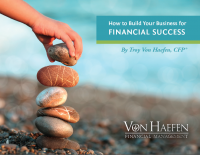
Most people understand the general concept of risk in relationship to investments, but many people get the true picture of risk wrong when it comes to investing. Specifically, how much risk should be taken inside a portfolio.
Risk and Returns
The higher the risk inside a portfolio the greater the possibility of increased returns. The oppositional side of the prior statement is that more risk means an increased chance of steeper losses. Therefore, it’s extremely important to determine the proper risk level when investing.
Determining the Proper Level of Risk for Your Portfolio
Risk is not simply how well you handle the ups and downs of the stock market. Risk should be much more than that. A true picture of risk should be based on the individual investor’s situation. A few items that impact the risk equation are: age, employed vs self employed, single or married, dependent children, financial needs, ability to hedge against inflation, and the ability to hedge against deflation.
Here’s an example: A married investor with three kids and is self employed can generally withstand less risk than a single investor without kids. This is based on the fact that the married investor has a spouse and kids that rely on him/her for financial support…..plus this investor has the added risk of being self employed. The single investor has no one to support, so, therefore, can generally be more aggressive. The point is risk should be viewed and approached from a personal level, which dictates a certain amount of financial protection. Can you think of other areas in your life that may impact your risk profile?
Everyone has a different risk profile, but understanding the appropriate amount of risk to hold in a portfolio is key. An investment plan built on a risk profile simply based on your how much risk one can stomach is wrong. Many individual factors must be incorporated into a proper risk profile, as illustrated above.
Does your investment advisor utilize this approach to determine risk? Do you feel your portfolio is designed with the correct level of risk? If you aren’t sure about your appropriate level of risk, ask your advisor. If you don’t have an advisor, this is a great topic of discussion to begin a relationship with a fee-only advisor.

